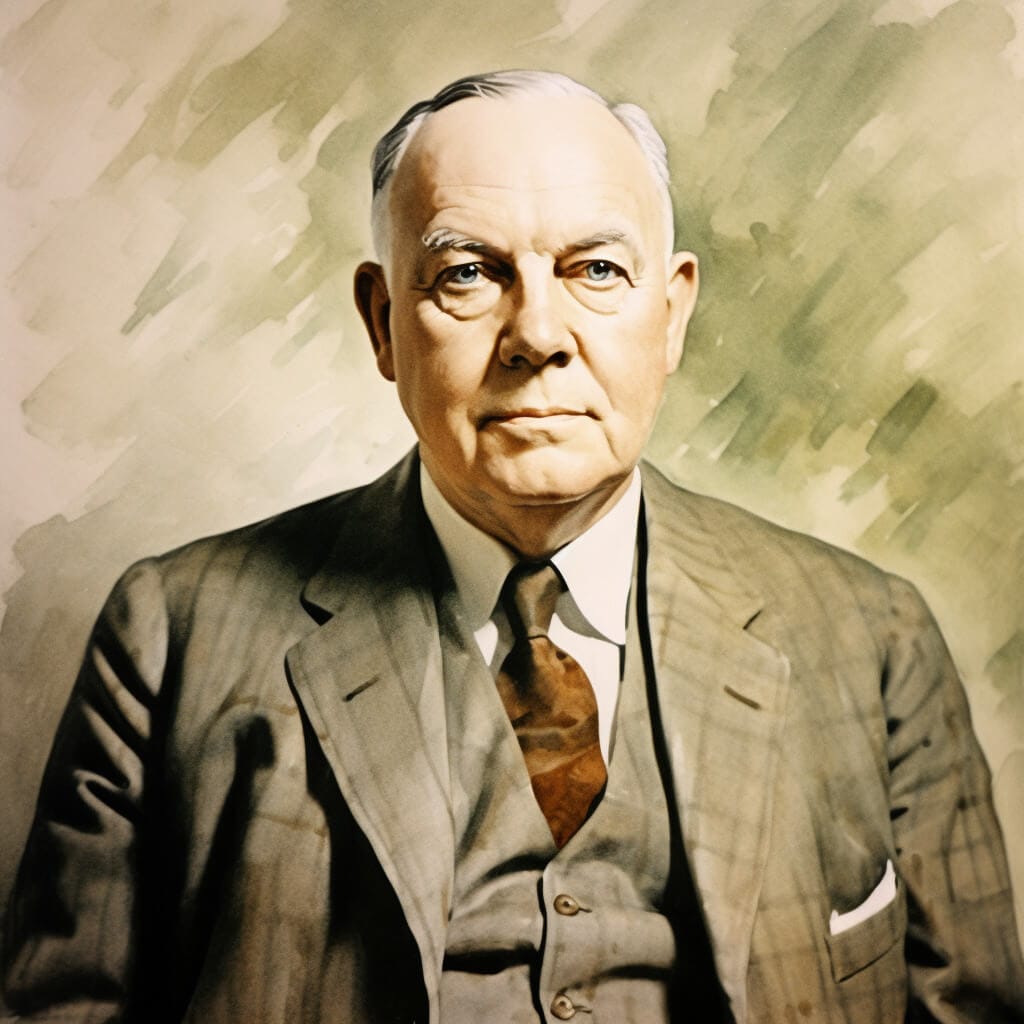Wallace Stevens was an iconic figure of 19th-century American poetry. He was renowned for his variety of writings, such as verse and prose. Stevens was a man of many talents, as the trained lawyer would end up working at a number of law firms throughout his life and still managed to win a Pulitzer Prize.
Wallace Steven’s poetry style was known for its similarity to the French symbolist poets of the 19th century. He would focus heavily on imagery and interesting language. He would also write a number of impressive biographies for the likes of William Carlos Williams, Hart Crane, Robert Lowell, John Berryman, and Gerard Manley Hopkins.
Early Life
Wallace Stevens was born in Reading, Pennsylvania, in October of 1879. His family was Lutheran and had originally settled in the area as religious refugees. Due to his family’s wealth, he was able to attend Harvard University as a special, non-degree undergraduate student for three years. It was his first ambition to become a writer and work as a reporter for the New York Herald Times. He was greatly influenced by the work of philosopher George Santayana. He would also work for various law firms in New York City.
Marriage and Early Career
Stevens returned to Reading in 1904, where he met Elsie Kachel, a stenographer. The two were together for five years before they married in 1909. During this time, Stevens was working for the American Bonding Company, which was an insurance firm. His parents objected strenuously to the marriage, as they saw her as too poor for their son. This conflict ended the relationship between Stevens and his parents. The couple had a daughter in 1924 named Holly. Although Elsie suffered from mental health issues, which eventually led to a physical separation, the couple never divorced.
Rather than pursuing writing, he went to New York Law School in 1903 and was admitted to the bar a year later. While in New York, Stevens became close with the painters of Greenwich Village and poets Marianne Moore and E.E. Cummings. Stevens was dedicated to his law career, and by 1914, he became the vice president of the Equitable Surety Company of St. Louis, Missouri. The job was dissolved, and he moved to Connecticut, in Hartford, where he would spend the rest of his life. He was given a role at the Hartford Accident and Indemnity Co., where he gradually made his way to vice president in 1934.
It was also around this period that Stevens sent a group of poems to Harriet Monroe in an effort to win a war poem competition. His work was not selected, but it was still published later that year.
Literary Career
Stevens’ first book of poems was completed while the couple lived on Farmington Avenue. It was titled Harmonium and was published in 1923. The influence of Romantic and Symbolist poetry on Stevens’ writing is clear in this volume. From the beginning, his work was concerned with the imagination and its ability to transform the ordinary. He chose to spend the next years focusing on her business career, but new writing emerged in 1930, as did a second edition of Harmonium in 1931.
The couple remained in the area until 1932, when Stevens purchased a house on Westerly Terrace, which served as his home until his death. Financially, he was very well off, earning what amounts to a three-figure salary today as an insurance executive. In 1935, his next collection, Ideas of Order, was published. It was followed two years later by The Man With the Blue Guitar. Stevens would go on to release the book Owl’s Clover in 1936.
Travels to Key West
One of the almost constant themes in Stevens’ work is Key West, Florida. He traveled there a number of times between 1922 and 1940. His first visit was in January of 1922, and he immediately thought the city a paradise. The influence of the area can be seen most poignantly in his first two collections: Harmonium and Ideas of Order. Although Stevens is now considered one of the most important poets of the 20th century, his work was not recognized until after his death. The volume Collected Poems, finally brought him the acclaim he maintains to this day.
By the time the 40s were ending, Steven had already completed the bulk of his poetic output. In 1947, he published Transport to Summer. His career was still going relatively unnoticed, but the volume was reviewed well.
Later Life and Illness
Stevens struggled with his weight for most of his life, often needing to be put on medical diets. In 1955, the final year of his life, his health continued to deteriorate. He underwent a number of procedures for a variety of ailments. These included a severely bloated stomach and a gallstone.
During his surgeries, it was discovered that Stevens was suffering from stomach cancer. This was causing a blockage of his digestion. His daughter Holly was the only one told of his condition. Stevens remained ignorant of what was then a mortal diagnosis. Unfortunately, Stevens’ wife could not assist with his recovery when he returned home. This meant he reentered the hospital in late May.
Although still very ill, he was able to attend a ceremony to receive an honorary Doctor of Humanities degree from the University of Hartford. He later traveled to New Haven for an honorary Doctor of Letters. His health continued to worsen, and he was readmitted to the hospital on July 21. He died on the morning of August 2, 1955. His last completed work was The Necessary Angel, a collection of essays on poetry. In 1955, the publication of The Collected Poems of Wallace Stevens was complete, which garnered widespread recognition. This would go on to earn him the Pulitzer Prize for poetry and the National Book Award.
Famous Poems
Wallace Stevens created some iconic works during his career. Here are some of his most famous poems:
- ‘Anecdote of the Jar‘
- ‘Disillusionment of Ten O’Clock‘
- ‘The Emperor of Ice-Cream‘
- ‘The Idea of Order at Key West‘
- ‘Sunday Morning‘
- ‘The Snow Man‘
- ‘Thirteen Ways of Looking at a Blackbird‘
- ‘The Glass of Water‘
- ‘Notes Toward a Supreme Fiction‘
- ‘The Comedian as the Letter C‘
Influences
He involved himself in New York City’s artistic community through his association with several writers, including poets Marianne Moore and William Carlos Williams.
FAQs
Wallace Stevens died on August 2, 1955, at the age of 75, after a battle with stomach cancer. It was discovered after having surgery to fix a gallstones issue.
Wallace Stevens wrote over 300 poems, including some of the most famous and beloved poems of the 20th century. Some of his best-known poems include; ‘The Auroras of Autumn,’ ‘Anecdote of the Jar,’ and ‘Disillusionment of Ten O’Clock.’
Wallace Stevens is not generally considered to be a romantic poet. Romantic poets typically focus on the individual’s emotions and experiences, while Wallace Stevens’ poetry is more abstract and philosophical. However, Stevens did admire some of the romantic poets, such as William Wordsworth and John Keats.
Wallace Stevens’ style of writing is characterized by its use of rich imagery, complex symbolism, and intricate wordplay. His poems often explore philosophical themes such as the nature of reality, the meaning of life, and the role of art.
Wallace Stevens is not generally considered to be a naturalist. Naturalists typically focus on the natural world and its laws, while Stevens’s poetry is more concerned with the human imagination and its creations. However, Stevens did draw inspiration from the natural world in some of his poems.


